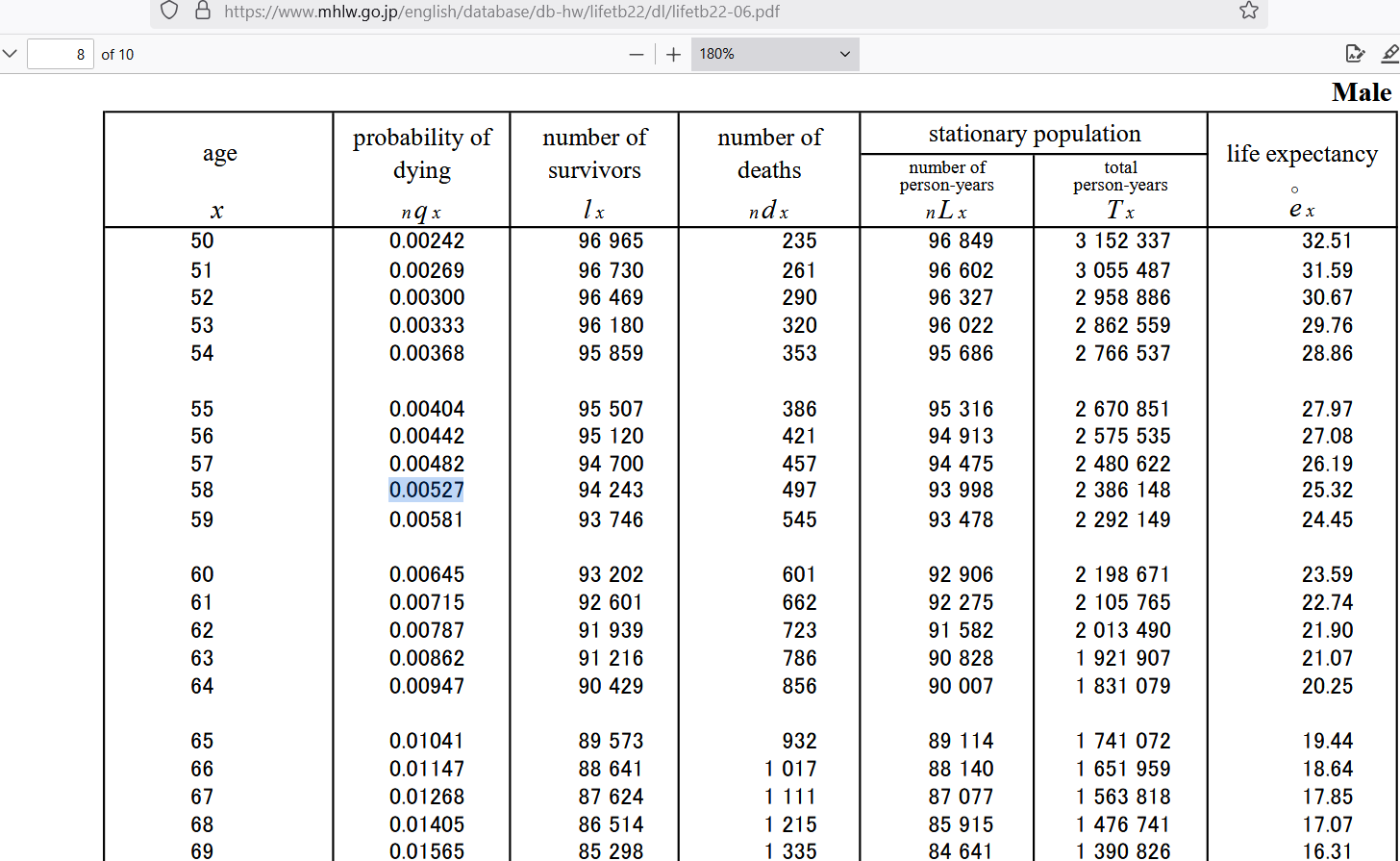As Vigilant Fox recently reported, COVID shots in Japan increased the probability of death beyond the risk faced when remaining unvaccinated. To get an estimate of how much the risk went up, you can use the life tables for Japan. Here is the differential of weekly death risk for those who took COVID shots vs. those who did not:
For those remaining unjabbed (orange), weekly death risk was just about 0.01%. When that is true, then yearly death risk is 0.52%, or 0.0052 when put into decimal form:
That equates to the yearly death risk of a 58 year-old male in Japan. Because the actual level is below 0.01 for weekly percent dying, the more-accurate age might be age 57 for males in Japan. But what about the weekly death risk when at 120 days post-dose? The graph indicates almost 0.049% weekly death risk, but what age has that risk?
The males of age 74 have a yearly death risk of 0.02587, which equates to a weekly death risk of 0.0004975, which becomes 0.04975% when put into percentage form. In other words, COVID shots added between 16 and 17 years to the baseline death risk — making people die as if they were 16-17 years older than they truly were.
Evidence suggests that COVID shots make it so that you have the death rate of someone 16-17 years older than you are — at least up to 120 days.
Reference
[probability of dying at every age in Japan] — https://www.mhlw.go.jp/english/database/db-hw/lifetb22/dl/lifetb22-06.pdf






